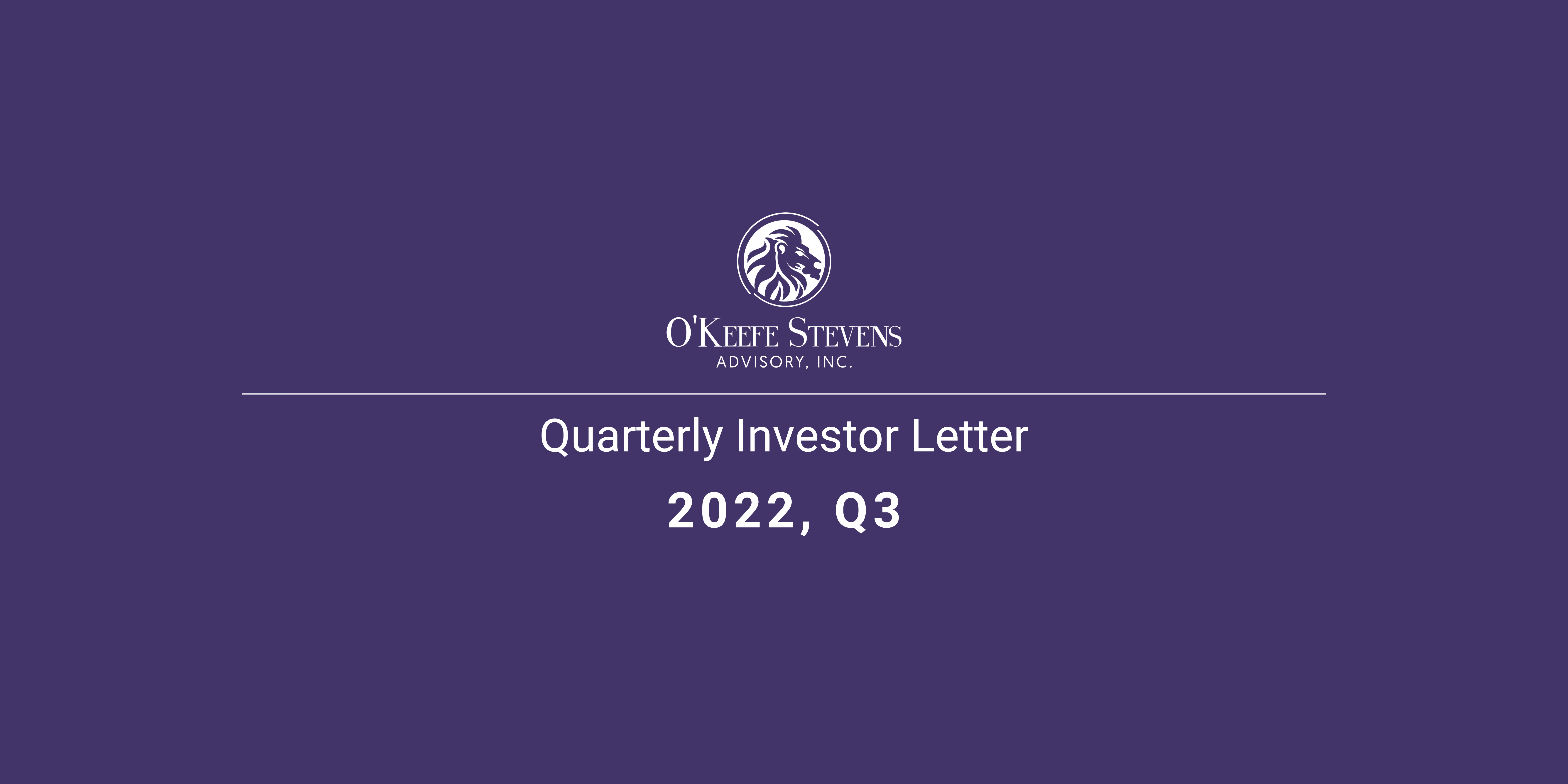Quarterly Investor Letter Q3 2022
Author: Dominick D’Angelo
What a Difference a Year Makes
Entering 2022, markets were at or near all-time highs, companies and SPACs were going public daily, and the 10-year yielded ~1.60%. Through the first three quarters of the year, there have been 162 IPO’s, which is down 80% from a year ago, and the 10-year yields 3.83s%. Market appetite for speculative assets has diminished as a discount rate once close to 0% and capital, once abundant, has suddenly gone away. We believe many recent IPOs have no real business prospects and were funded solely due to the excess liquidity. Compound this problem with inflation, once thought of as transitory, is stickier than anticipated. Our big worry is that those on a fixed income stream in retirement and those living paycheck to paycheck are hit the hardest. When monthly grocery bills are up double digits and income marginally increases, discretionary spending either decreases or credit card purchases increase. The fed’s efforts can be described as better late than never, as they raise rates to do their part to combat the inflation problem they caused. Several companies have already preannounced worse-than-expected results for the upcoming quarter. To think these cases are isolated is unlikely.
Portfolio Changes
In light of our current outlook, we made some changes to the portfolio, purchasing LAZ while selling our stake in SRG and BEN.
Lazard (LAZ) has two business segments, an asset management business focused predominantly on equity investments and an Advisory segment where they assist clients with M&A, Restructuring, and other strategic initiatives. Over the past three years, Advisory and Asset management revenues have been roughly 50/50.
On the Asset Management side, equities comprise 78% of assets, fixed income comprises 18%, and alternative investments make up the rest. As with most active managers, fund outflows have occurred over the past several years, while fees have decreased marginally from 51bps to the high 40s. Aware of this headwind, Lazard’s active management fees remain below a typical active manager’s. We exited our position in Franklin Resources, using the proceeds to fund our LAZ purchase. Our goal was to gain exposure to an asset manager with an equity focus over a company focused on growing its Fixed Income and Alternative Investments base. Lazard’s investment strategies are tilted toward value investments. This style gives us confidence that assets may go from a net outflow to a net inflow as the value rotation continues. Additionally, the risk of owning unprofitable, pie-in-the-sky ideas is reduced when investing with Lazard.
While the asset management business is experiencing headwinds, Lazard’s Financial Advisory business, specifically the restructuring business, is set to see an uptick in demand. Rising interest rates and tight capital markets force companies with debt-laden balance sheets to reorganize. The countercyclical nature of this segment can help offset lost revenues in other segments that perform poorly during periods of stress.
Lazard has built a stellar reputation over the company’s 150+ years of existence. Ken Jacobs has been with Lazard since 1991 and CEO since 2009. We have the utmost confidence in his ability to lead Lazard. The company has raised the dividend from $0.36 in 2006 to $2.00 in 2022, paying out special dividends along the way. The company has also repurchased over 25m shares over the past three years. The capital-light nature of this business should result in increasing dividends and buybacks. Finally, we believe Lazard could be an acquisition candidate by either an Asset Manager or Investment Bank, though we are happy to hold the position and collect our dividends.
Seritage (SRG) – A good idea on paper, hard to execute in practice. When we made our initial purchase in 2018, we thought the idea of repurposing existing Sears and Kmart properties at below-market rents into modern spaces, enabling the company to charge multiples of the prior rent, made sense. Increasing rents from $5 to $20 PSF with a 10-11% ROI seemed like a no-brainer. The return profile made sense, and applying moderate leverage to stabilized properties improved end economics. Multiple changes at the management level and a $1.44B loan from Berkshire with a 7% interest rate and covenants (yes, those still exist) made this an impossible endeavor. We thought partnering with Eddie Lampert would align our interests and prove an intelligent decision, given the capital and brain power he has put into this situation.
On paper, selling non-core assets and using the proceeds to fund Capex plans and ongoing corporate expenses makes sense. The problem is the number of properties the company needed to sell for this business model to work. Every year that went by materially lowered the company’s value as the interest expense proved to be a heavy burden. The company essentially turned into a death spiral where they were merely selling properties to meet the interest expense and having little remaining for the core part of the business plan. Compiling all this with the lockdowns in 2020 and 2021 and the supply chain mess still being worked through has further delayed this turnaround.
Today the company is much smaller. Seritage once owned 253 properties totaling 39m SF compared to today, where they own161 properties and 19m SF. During this time, they only paid down $100m of the term loan. The turnaround has taken too long, and the company has put itself up for sale. Again, on paper, this seems like a good idea; however, going through a sale of this proportion will take a long time in a calm environment. The rise in interest rates, tight credit markets, and equity market volatility make this a monumental task. I suspect the number of buyers for these properties, which was once small to begin with, is down to a handful. A critical issue with the SRG portfolio is that the assets are spread out across the country. One player is not going to purchase all these assets. Real Estate Developers and owners tend to concentrate their efforts on a single region (excluding the global players such as Blackstone, Simon, and other private equity groups). Seritage may be able to sell some nearby properties as a package but would likely take a discount to FV, or it has to sell each property one by one.
The rise in interest rates and subsequent rise in Cap Rates will dramatically lower the portfolio’s value as the company gets a double hit. Most properties are unlikely to be move-in ready. Construction financing costs will lower purchase prices as buyers factor in the higher interest expense to fund the redevelopment. Additionally, the steady-state value is reduced as higher cap rates push down the property’s value. Companies like Amazon are trying to shed excess warehouse space, work from home has resulted in increased office space availability, and, given the current state of the economy, I suspect the number of retailers looking to expand has declined. Combining all these factors presents challenges when modeling out lease and absorption rates. Increased uncertainty translates into lower prices.
In July, management believed a sale process over 1-2 years could generate $18.50 to $29 per share. At the time, the stock traded in the mid 5’s and spiked almost 100% on the news. While skeptical of this range initially, prevailing market conditions have us doubting the low end is attainable. The stock has gone from a high of $14 in the quarter to below $9. One final concern was Eddie Lampart’s 29.1% ownership stake in SRG. Mr. Lampert stepped down from the Board on March 1st, coinciding with SRG’s strategic review announcement. The most concerning statement from Mr. Lampert was, “I encourage and support the Board’s efforts to explore and pursue strategic alternatives to enhance shareholder value. I have decided to retire to allow additional time to focus on my other investments and to provide me with greater flexibility to explore alternatives for my investment in Seritage, which could include participating with parties that may be interested in acquiring certain of the company’s assets and trading shares in open market transactions.” Whether or not Eddie bids on some or all of the assets was not something we wanted to be around. The company has shown no history of executing on plans laid out. While this is not the original management team, the task is daunting. We wish them and shareholders the best. Given the broader market decline, we found it prudent to take this capital and deploy it elsewhere.
We have taken a few lessons away from this investment. High turnover rates at the management level need to be scrutinized more, especially when factoring in the task. Second, having limited insight into a business due to no earnings calls increases risk. Finally, some ideas may be good on paper but impossible to execute. Complexity can often trump a great idea. Less is sometimes more.
This Too Shall Pass
While declines in portfolio values are painful, we remain confident in our companies. The healthy balance sheet of several companies should allow them to repurchase shares at desirable prices. Assuming the value of the business has not materially changed, these buybacks are increasing the potential upside over the long term. It’s exciting when a stock is down a few percent and know the management team is in the market buying shares. Cheap shares are now even cheaper, and while living through these price declines is not easy, the value of our holdings is likely going up in the long term.
Portfolio Top 5 Holdings
At the end of Q2, our top 5 holdings represented ~35% of assets, with NVDA representing almost 11% of the portfolio. The remaining four include QCOM, AMGN, BKRIF, and GLW. Three of the top 5 positions have several tailwinds that we believe are in the early stages of rollout, including 5G, Autonomous driving, and increased vehicle content. Looking out a few years, we believe forward returns will continue to increase as the market and our portfolio holdings decline.
Disclaimer
This document is for informational purposes only. O’Keefe Stevens Advisory is not providing any investment recommendations with the publishing of this document, and no firm performance data is included in this document.



No responses yet